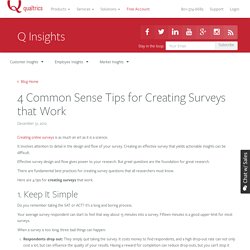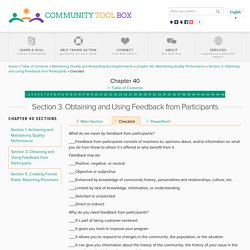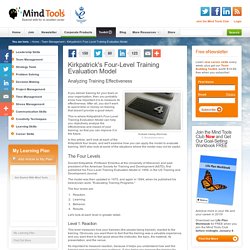

OnDemand Webinar. Think you know your top 10 leaders? Bet you don’t. Some of the greatest leaders and most important employees in your organization are probably relatively unknown people who don’t have important titles.

If you’re not careful, you just might be missing what they have to offer. Take this example from the world of sports. If I told you that one of the greatest players in the NBA doesn’t score many points, you might question my judgment. When I add that he also doesn’t rebound much or even steal, block, or get assists very often, then you’ll probably start to think I’m genuinely crazy. Or, if you’re generous, you might just think I’m confused about what NBA players are supposed to do. But if you dig a little deeper, you’ll find what I’m saying is true. You see, while Battier doesn’t score well on the traditional basketball metrics, when you take into account what happens to his team when he’s on the court a very different story emerges. IntrotoMarketResearch. How to Measure Customer Satisfaction: Do You Overlook these 4 Key Customer Satisfaction Measurements?
When we have a great food experience at a new restaurant, we usually want to go back.

Positive evaluations result in greater customer satisfaction, which leads to customer loyalty and product repurchase. 4 Common Sense Tips for Creating Surveys that Work - Qualtrics. Creating online surveys is as much an art as it is a science.

It involves attention to detail in the design and flow of your survey. Creating an effective survey that yields actionable insights can be difficult. Effective survey design and flow gives power to your research. But great questions are the foundation for great research. There are fundamental best practices for creating survey questions that all researchers must know. Employee Satisfaction Surveys: Do You Make Any of These 10 Employee Satisfaction Survey Mistakes? A properly executed employee satisfaction survey helps companies understand the needs within the organization.

However, there are common mistakes we see on a regular basis that all researchers must be aware of. Take a look at some of the ten most common errors. 1. Poor Planning Before sending out an employee satisfaction survey, it is wise to have a clear direction. What is the purpose of the survey? What do you want to accomplishment as a result of this survey? Consider important elements such as length of survey, time it takes for completion, and when to send it out, among other factors.
Survey Questions 101: Do You Make any of These 7 Question Writing Mistakes? Details, details, details.

Creating surveys that yield actionable insights is about details. And writing effective questions is the first step. We see common mistakes that keep survey questions from being effective all the time. Here are the 7 most common. Survey Question Mistake #1: Failing to Avoid Leading Words / Questions Subtle wording differences can produce great differences in results. In additions, strong words such as “force” and “prohibit” represent control or action and can bias your results. Www.i-coachacademy.com/media/recommended reading/Feedback Part One - Marti Janse van Rensburg.pdf. Section 3. Obtaining and Using Feedback from Participants. What do we mean by feedback from participants?

___Feedback from participants consists of reactions to, opinions about, and/or information on what you do from those to whom it’s offered or who benefit from it Feedback may be: ___Positive, negative, or neutral ___Objective or subjective ___Enhanced by knowledge of community history, personalities and relationships, culture, etc. ___Limited by lack of knowledge, information, or understanding ___Solicited or unsolicited ___Direct or indirect Why do you need feedback from participants? ___It’s part of being customer-centered ___It gives you tools to improve your program ___It allows you to respond to changes in the community, the population, or the situation ___It can give you information about the history of the community, the history of your issue in the community, or the history of your population.
Kirkpatrick Partners, The One and Only Kirkpatrick Company® Kirkpatrick's Four-Level Training Evaluation Model - MindTools.com. Analyzing Training Effectiveness.

6. How to ensure that training has been effective - ECApedia. The trainer needs to ask him/herself the questions: How do I plan the training so that it helps participants to retain the material?

How do I get feedback on the training and whether it has helped participants in their panel work? Retention We know that much of the knowledge and skills learned on a training event is lost very quickly unless it is put into use straightaway on a day-to-day basis. "Run, hide, or say thank you: when faced with feedback, what do you do?" Joy Mayer at TEDxCoMo. Likert Scale. By Saul McLeod published 2008 Various kinds of rating scales have been developed to measure attitudes directly (i.e. the person knows their attitude is being studied).

The most widely used is the Likert Scale. Likert (1932) developed the principle of measuring attitudes by asking people to respond to a series of statements about a topic, in terms of the extent to which they agree with them, and so tapping into the cognitive and affective components of attitudes. Likert-type or frequency scales use fixed choice response formats and are designed to measure attitudes or opinions (Bowling, 1997; Burns, & Grove, 1997). These ordinal scales measure levels of agreement/disagreement. A Likert-type scale assumes that the strength/intensity of experience is linear, i.e. on a continuum from strongly agree to strongly disagree, and makes the assumption that attitudes can be measured.